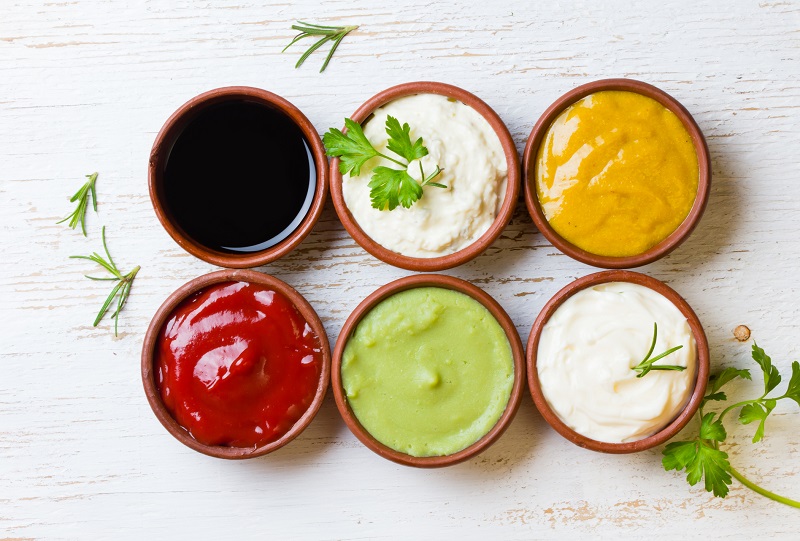
You are probably eating too much sodium; most of us are. Recent estimates show people, on average, consume about 1.5 times the recommended amounts of sodium daily.
This matters because scientists are linking excess sodium intake with dangerous health conditions like heart disease, stroke, osteoporosis and cancer.
While table salt is a common culprit, sodium is also found in most convenience foods, condiments, spices and restaurant dishes. Its widespread use can make reducing sodium intake feel like a daunting task.
However, the following simple tweaks to your meal prep can help you tackle this challenge and improve your health.
How Sodium Affects Your Health

First off, sodium itself isn’t bad for you. Your body needs sodium to help with muscle and nerve function. Eating too much sodium is what causes problems.
When too much sodium is circulating in your blood, your body pulls water into your bloodstream to dilute it. This increases your total blood volume, making your heart and blood vessels work harder to circulate blood throughout your body.
Additionally, this taxes your kidneys, which constantly filter your blood, re-circulating nutrients and expelling waste through your urine. Over time, this extra strain can cause permanent damage to your blood vessels and kidneys, resulting in an increased risk of heart attack, stroke and kidney disease.
Furthermore, scientists have found that too much sodium increases calcium excretion from your bones, elevating your risk for osteoporosis.
The bottom line: you don’t have to fear any trace of sodium; you just have to adopt strategies to keep it in check.
Can Sodium Intake Affect Weight Loss?

Most people know overeating sodium can lead to fluid retention or “water weight.” The fluid your body holds onto to dilute the sodium content of your blood results in extra pounds on the scale. This effect is generally temporary and will resolve within a few days.
However, some research has linked high sodium intake with an increased risk of fat accumulation and obesity. One explanation for this is that high-sodium foods also tend to be high in calories.
Though interestingly, a large study found a significant link between sodium intake above 2300 milligrams daily and obesity, regardless of how many calories people consume.
For now, it’s unclear exactly how sodium intake impacts long-term weight control.
How Much Sodium Should You Have?

Leading health organizations recommend keeping sodium intake around 1500 to 2300 milligrams daily. With these amounts, you can include a variety of foods to meet your nutrient needs without increasing disease risks associated with sodium consumption. For reference, 2300 milligrams of sodium is the equivalent of one teaspoon of salt.
Signs You’re Eating Too Much Sodium

Everyone responds differently to sodium. People sensitive to sodium may feel puffy, bloated or thirsty after a salty meal, while others won’t notice any changes.
It’s best to track your meals for about a week to get a good baseline for your sodium intake. Nutrisystem’s NuMi app helps make this easy. Just search from their robust database of foods, and the app will do all the tracking and calculating for you.
Your logs will pinpoint the foods contributing the most sodium to your diet. Once you know where sodium comes from in your diet, you can use the simple strategies below to reduce sodium intake.
6 Simple Strategies for Reducing Sodium in Your Meals
1. Use Herbs and Spices

Flavor your dishes with herbs, spices, and citrus juices instead of relying on salt for taste. Try these:
- Use basil, oregano and thyme to season pasta, roasted veggies or tomato soup.
- Combine lemon zest, black pepper and thyme to flavor chicken or fish.
- Blend smoked paprika with garlic powder and cumin to spice up roasted meats, potatoes or chickpea salads.
2. Switch Up Your Cooking Methods

Baking foods can sometimes zap meals of flavor and moisture. This is why many baked dishes require the addition of sauces, cheese and salty seasonings. Sautéing, grilling and broiling all help bring out foods’ natural flavors so that you can rely less on extra seasoning.
3. Read Food Labels

It’s a common misconception that all packaged foods must be avoided due to their high sodium content. While packaged foods are often loaded with sodium, there are still options that will allow you to keep sodium in check without sacrificing convenience.
Nutrisystem plans are an example of this. All of the Nutrisystem® plans are designed to align with the USDA’s recommended daily intake of 2,300 mg of sodium or less for the general adult population (Dietary Guidelines for Americans, 2020 – 2025).* The actual sodium level may vary based on which plan you choose and which grocery food items you add in. You can also use our “Lower Sodium” filter when customizing your food choices.
Reading food labels will help you find your best options. A good rule of thumb is to aim for packaged items that provide less than 20% daily value (DV) for sodium. You’ll find this number on the right-hand side of the food label. Try to choose foods labeled low or no sodium when possible.
4. Rinse Canned Foods

If you use canned beans, vegetables, or other canned goods, rinse them thoroughly with water to reduce their sodium content. One study found rinsing canned veggies reduced their sodium content by up to 23%.
5. Swap Out Condiments

Certain condiments add a significant amount of sodium to meals. Try these swaps to slash sodium:
- Use coconut aminos instead of soy sauce.
- Use oil and vinegar instead of salad dressing.
- Use fresh cucumber slices instead of pickles.
- Use yellow mustard instead of Dijon.
6. Add More Potassium-Rich Foods

While this won’t reduce the amount of sodium in your diet, potassium can help counteract the effects of sodium in your diet. Adding potassium-rich foods like sweet potatoes, bananas, spinach, avocado and beets can help regulate blood pressure and reduce heart disease risk.
Key Takeaways
Most people could benefit from reducing their sodium intake, but this doesn’t mean you have to sacrifice flavor or convenience. Track how much sodium you eat regularly. Then use the tips in this article to make simple dietary changes that will have a lasting impact on your heart health.
References
- FDA. Sodium in Your Diet. [Internet]. [cited 2023 May 30]. Available from: https://www.fda.gov/food/nutrition-education-resources-materials/sodium-your-diet#:~:text=Americans%20eat%20on%20average%20about,1%20teaspoon%20of%20table%20salt!
- Zhang X, Wang J, Li J, Yu Y, Song Y. A positive association between dietary sodium intake and obesity and central obesity: results from the National Health and Nutrition Examination Survey 1999-2006. Nutr Res. 2018;55:33-44.
- Haytowitz DB. Effect of draining and rinsing on the sodium and water soluble vitamin content of canned vegetables. FASEBl. 2011;25:609.3-609.3.
Speak with your doctor or health care provider if you have any questions about your sodium intake.
*If you would like to reduce your sodium intake, please contact your health care provider to determine if an adjusted meal plan is required.







